The Evolution of NASA's Mars Rover Tires in Pictures
Mars Rover Tire Evolution
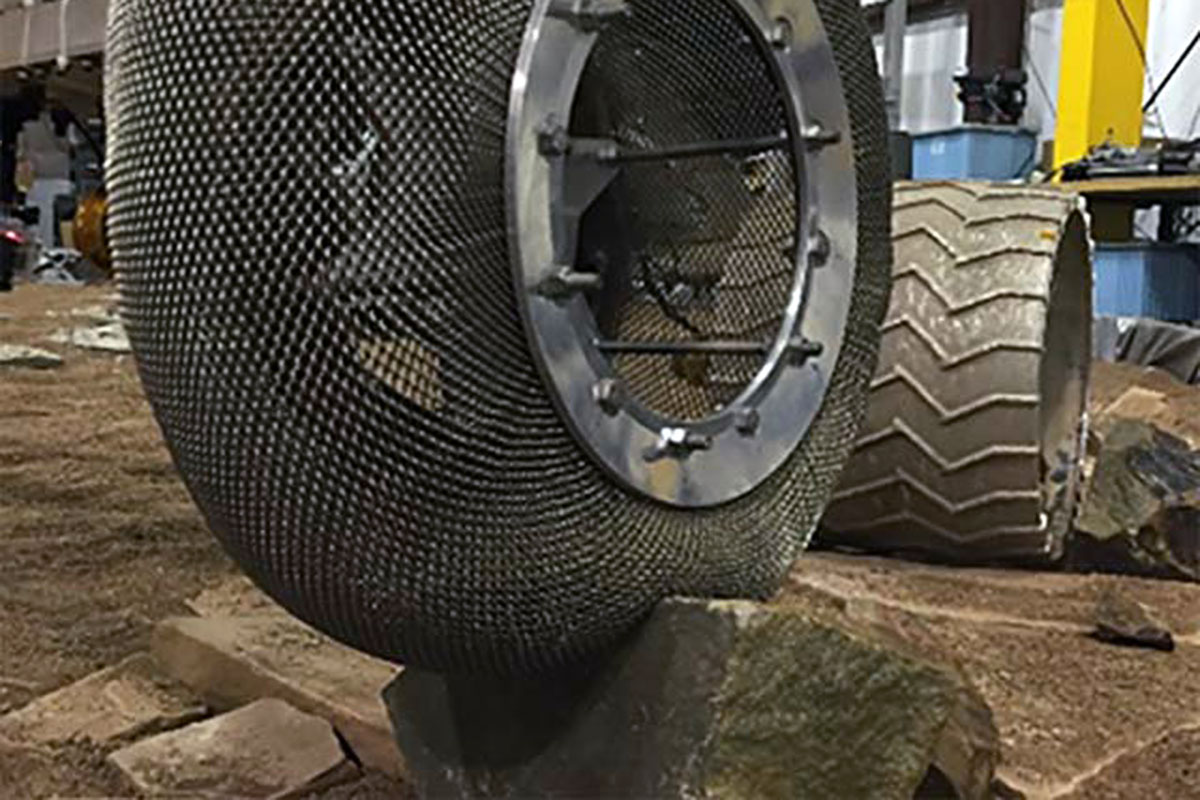
A new design for a Mars rover wheel uses mesh and a "shape memory alloy" that can spring back to its original shape after being deformed. [Read our full story here] Shown in this image, the steel wires deform when they roll over simulated Martian terrain at NASA's Jet Propulsion Laboratory (JPL). NASA has worked with different kinds of wheels for off-road vehicles, with the choice depending on the vehicle's destination and its expected lifetime.
Lunokhod
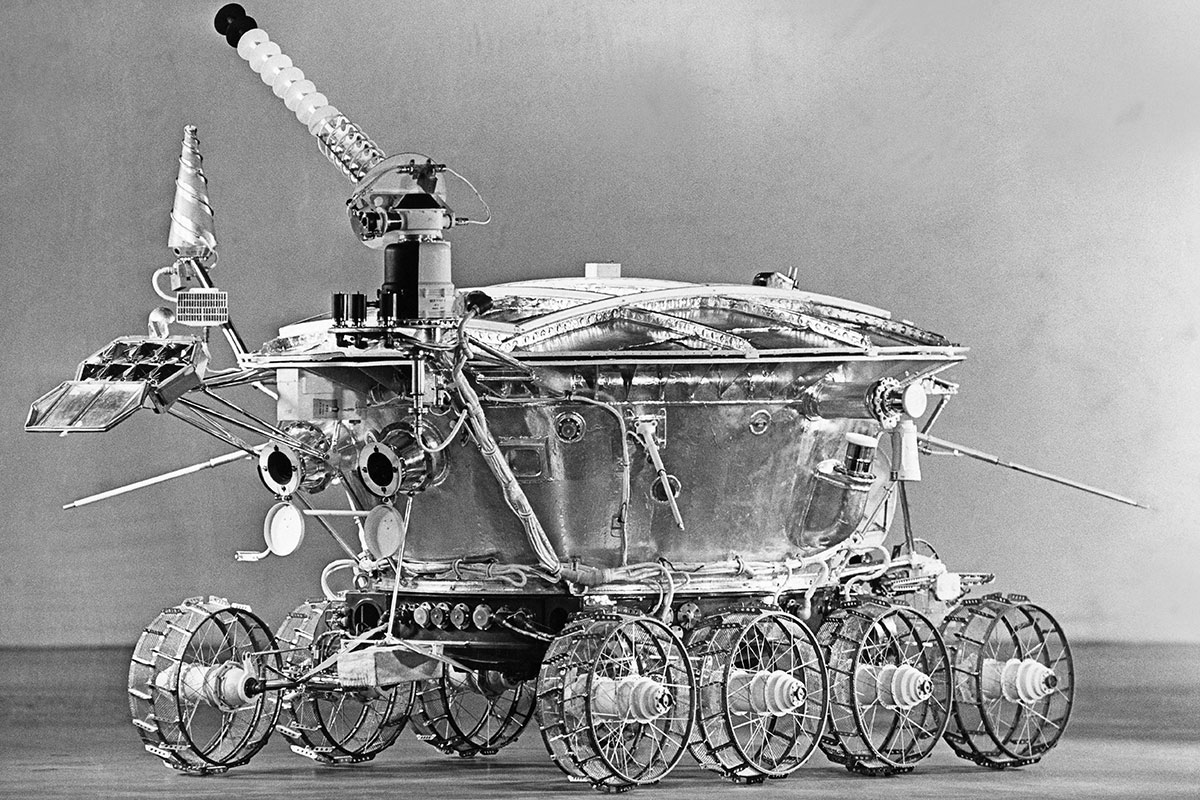
The Lunokhod 1 rover was the first remote-controlled robot to arrive on an extraterrestrial surface.
Alan B. Shepard Jr.
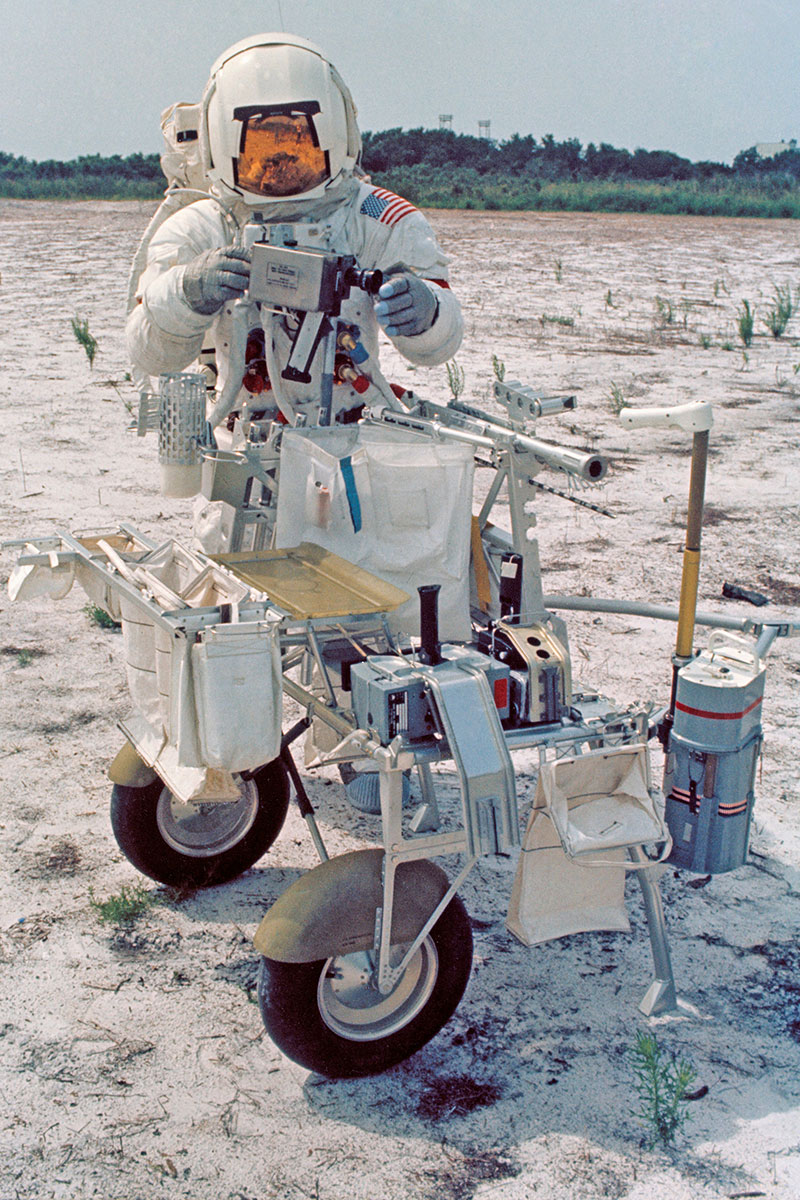
Astronaut Alan B. Shepard Jr., commander of the Apollo 14 lunar-landing mission, shown here participating in lunar-surface training at the Kennedy Space Center (KSC) in Florida. Shepard is adjusting a camera mounted to the modular equipment transporter (MET). The MET, nicknamed the "Rickshaw," served as a portable workbench with a place for the Apollo lunar hand tools and their carrier, three cameras, two sample container bags, a special environment-sample container, and a lunar-surface penetrometer.
Rover Wheel
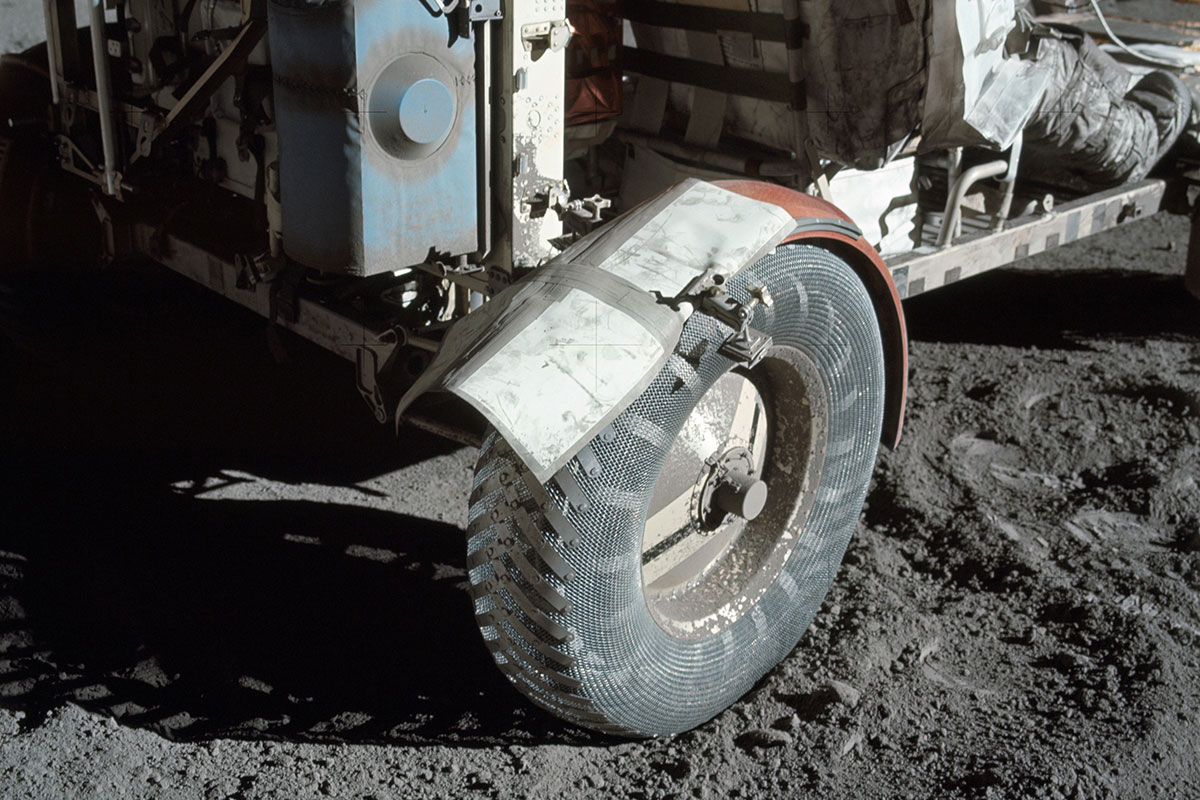
A close-up view of the wheel of the lunar roving vehicle (LRV) at the Taurus-Littrow lunar landing site. Note the makeshift repair arrangement on the right, rear fender of the LRV. During the mission's extra-vehicular activity 1 (EVA-1), a hammer got underneath the fender and a part of it was knocked off. Astronauts Eugene A. Cernan and Harrison H. Schmitt were reporting a problem with lunar dust because of the damaged fender. Following a suggestion from astronaut John W. Young in the Mission Control Center at Houston, the crewmen repaired the fender early in EVA-2 using lunar maps and clamps from the optical-alignment telescope lamp.
Spring Tire
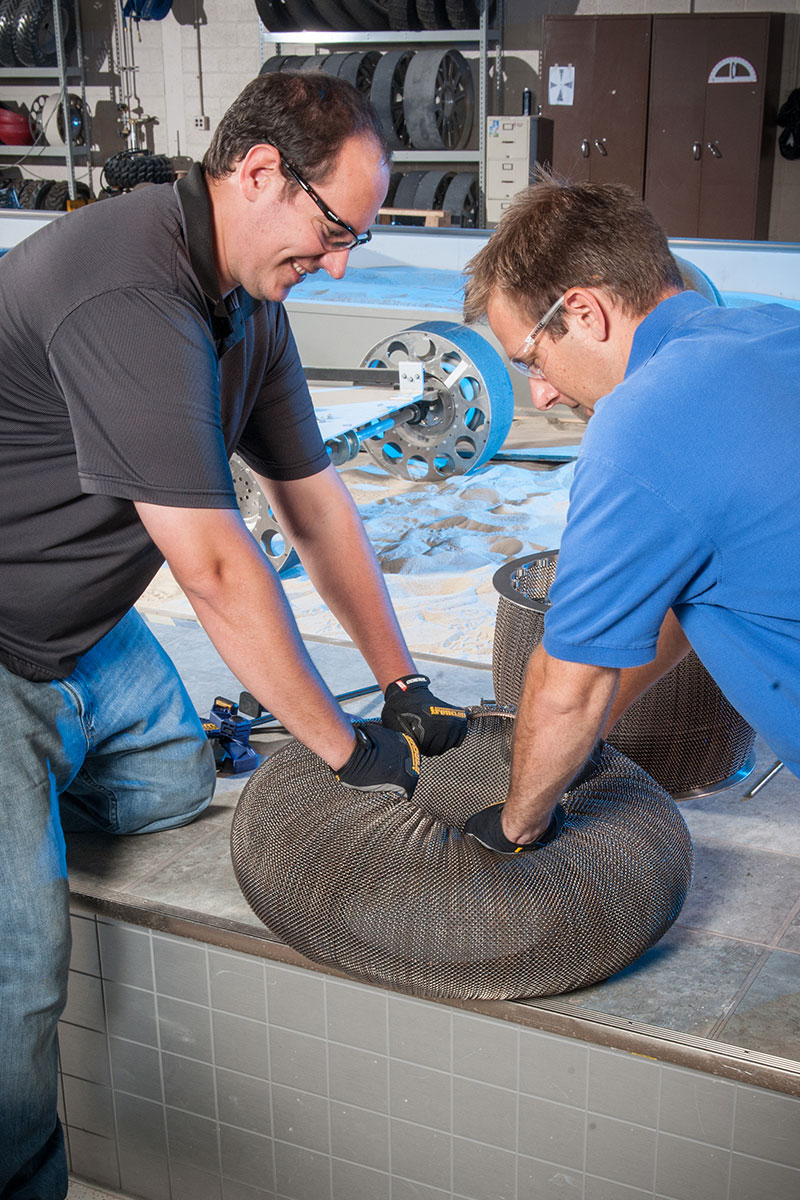
Engineers fabricating a new tire design using mesh and a shape memory alloy, in the Simulated Lunar Operations (SLOPe) laboratory at NASA's Glenn Research Center.
Mars Rover Damage
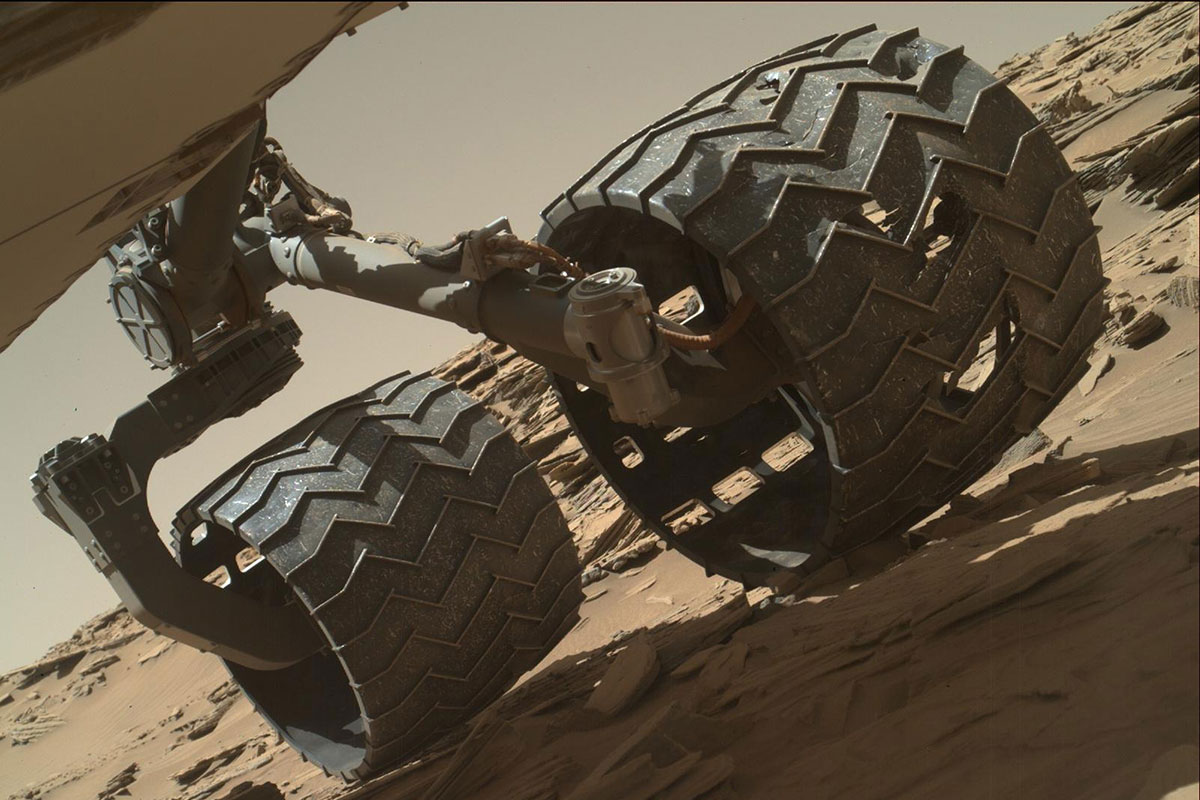
The team operating NASA's Curiosity Mars rover uses the Mars Hand Lens Imager (MAHLI) camera on the rover's arm to check the condition of the wheels at routine intervals. The image shows where the wheels have been damaged by the Martian terrain.
Testing Lab
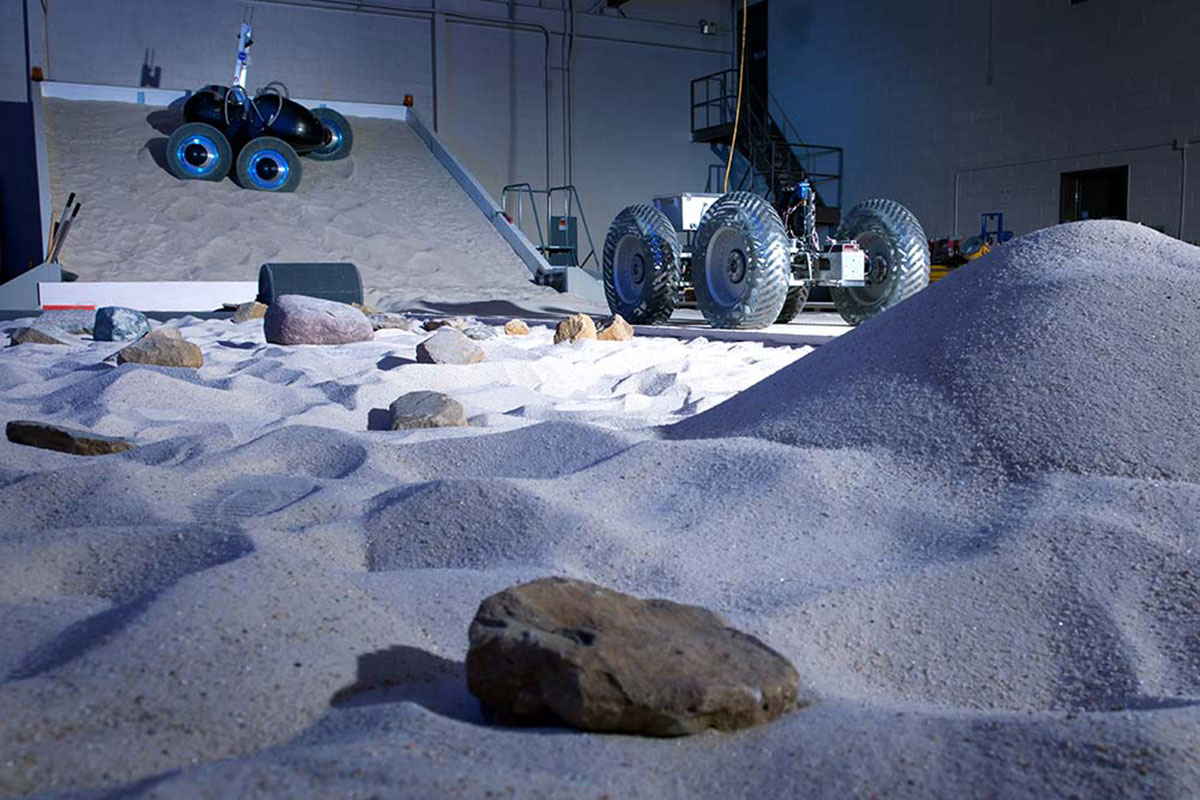
The SLOPe (Simulated Lunar Operations) laboratory at NASA's Glenn Research Center has test rigs and equipment used for studying the traction and performance of tires developed for lunar and planetary surfaces.
Testing Nickel
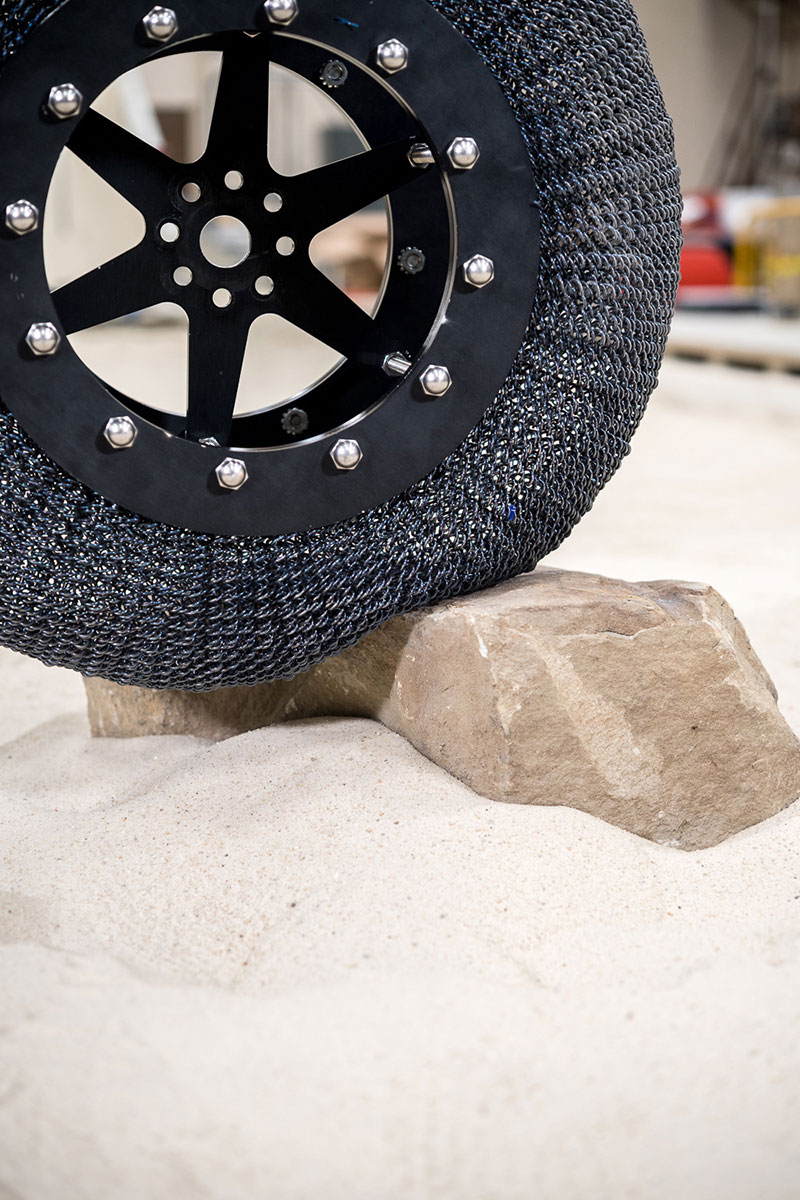
This is a recent shape for a metal-alloy tire prototype; it has dense coils, weighs about 20 lbs. and can handle 165 lbs. of load
Architecture
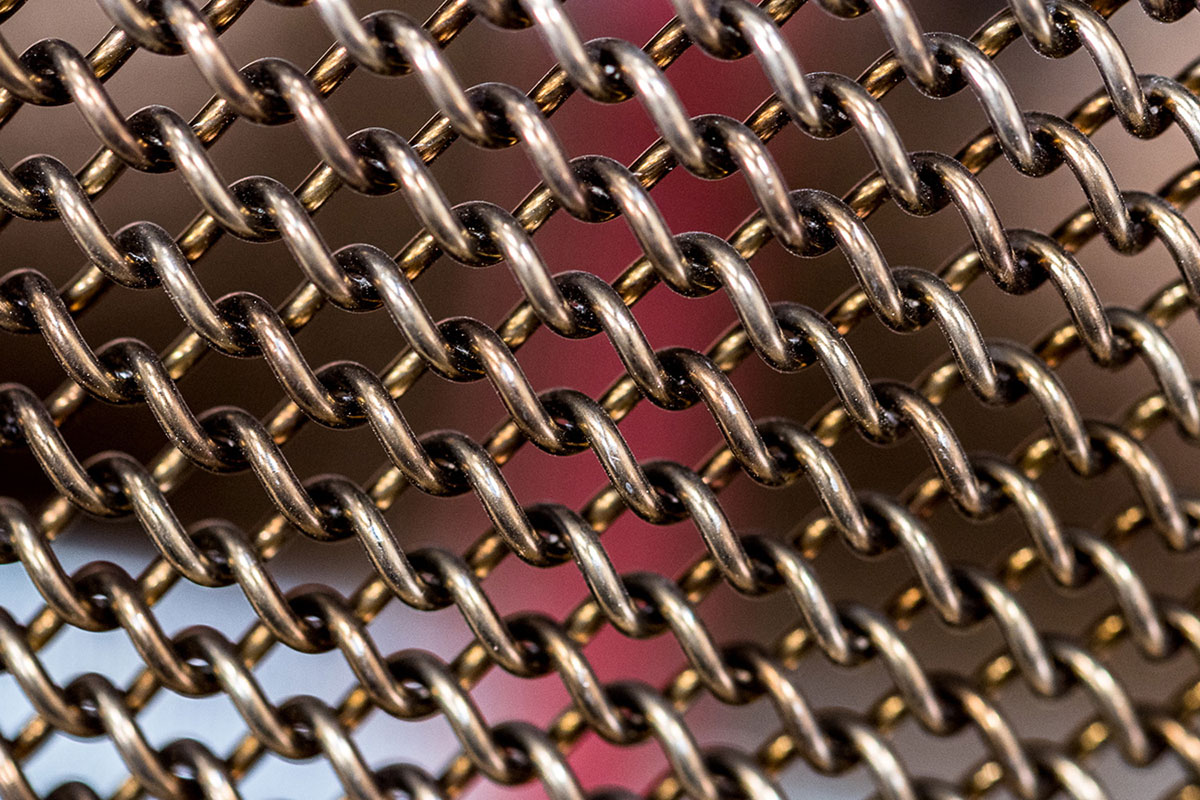
While early tire designs used woven wire, today's "spring tires" are made with a series of interconnected coils.
Terrain Test
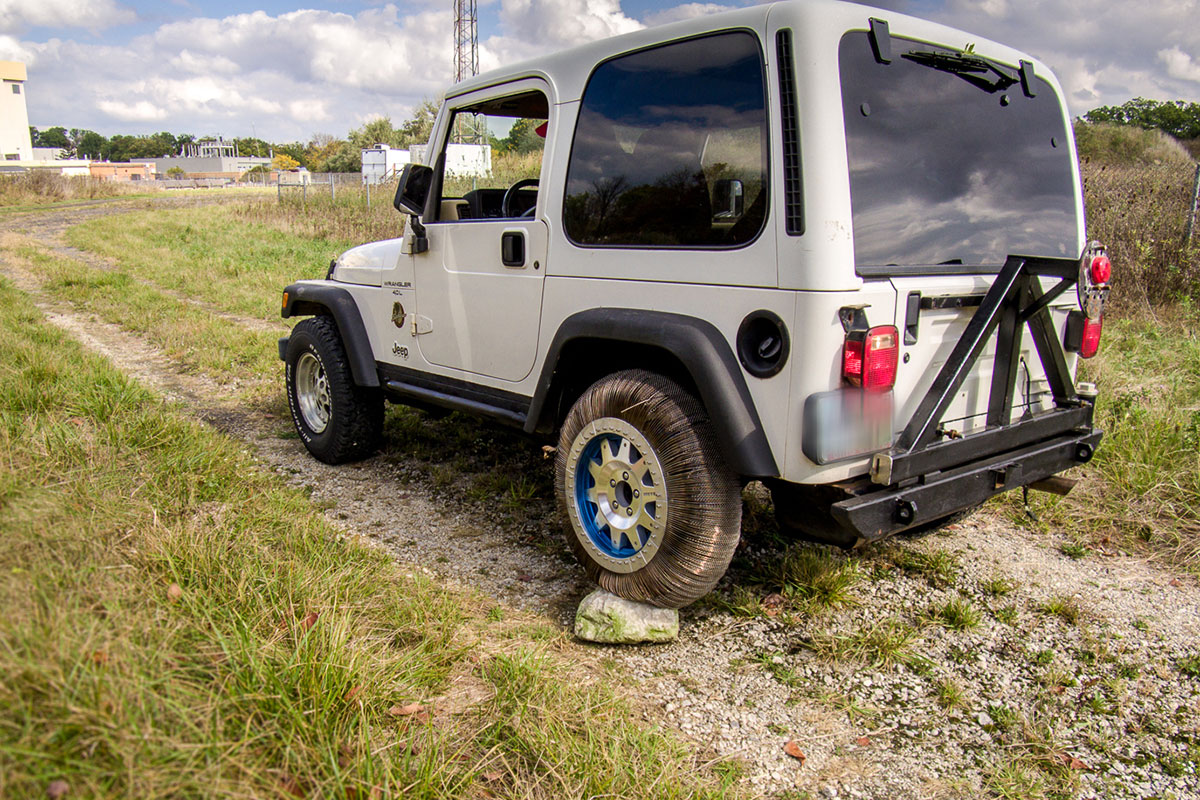
Recently, engineers and materials scientists have been testing a spin-off tire version that would work on cars and trucks on Earth.
Terrain File
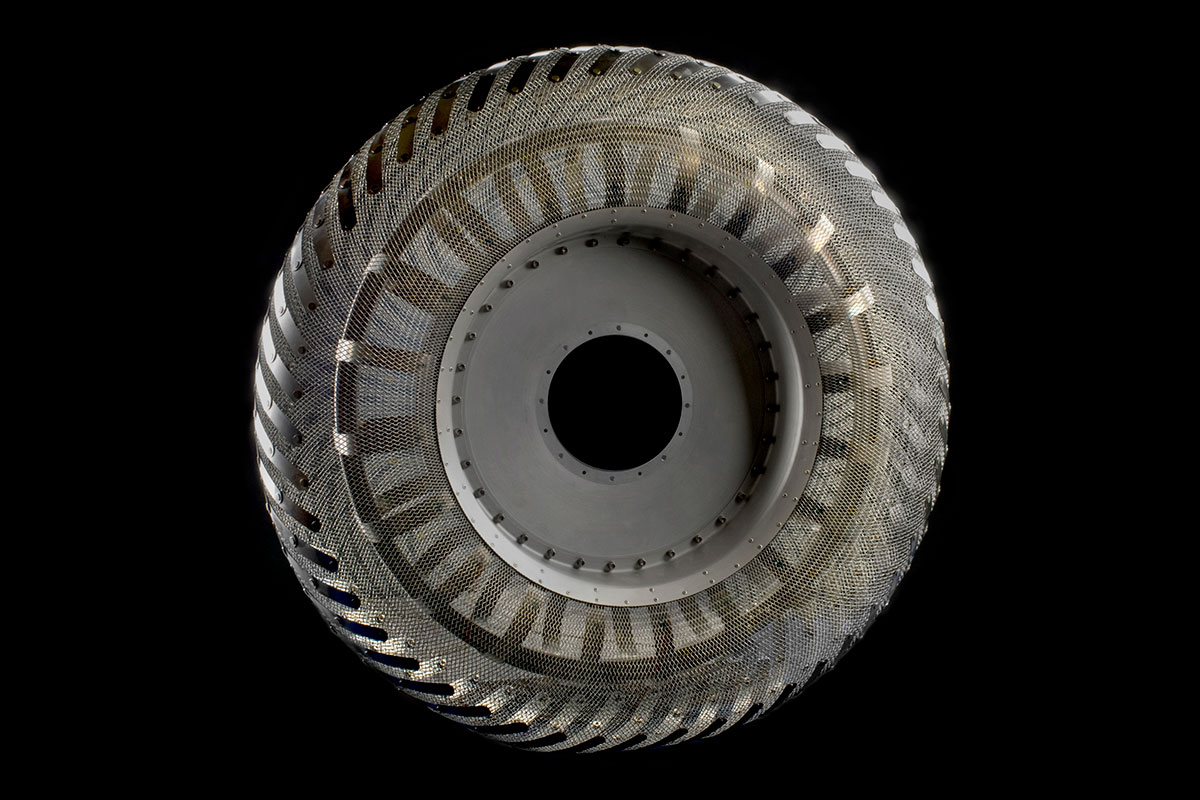
Wire mesh tire from the Simulated Lunar Operations (SLOPe) laboratory.
Join our Space Forums to keep talking space on the latest missions, night sky and more! And if you have a news tip, correction or comment, let us know at: community@space.com.
Get the Space.com Newsletter
Breaking space news, the latest updates on rocket launches, skywatching events and more!

Calla Cofield joined Space.com's crew in October 2014. She enjoys writing about black holes, exploding stars, ripples in space-time, science in comic books, and all the mysteries of the cosmos. Prior to joining Space.com Calla worked as a freelance writer, with her work appearing in APS News, Symmetry magazine, Scientific American, Nature News, Physics World, and others. From 2010 to 2014 she was a producer for The Physics Central Podcast. Previously, Calla worked at the American Museum of Natural History in New York City (hands down the best office building ever) and SLAC National Accelerator Laboratory in California. Calla studied physics at the University of Massachusetts, Amherst and is originally from Sandy, Utah. In 2018, Calla left Space.com to join NASA's Jet Propulsion Laboratory media team where she oversees astronomy, physics, exoplanets and the Cold Atom Lab mission. She has been underground at three of the largest particle accelerators in the world and would really like to know what the heck dark matter is. Contact Calla via: E-Mail – Twitter
